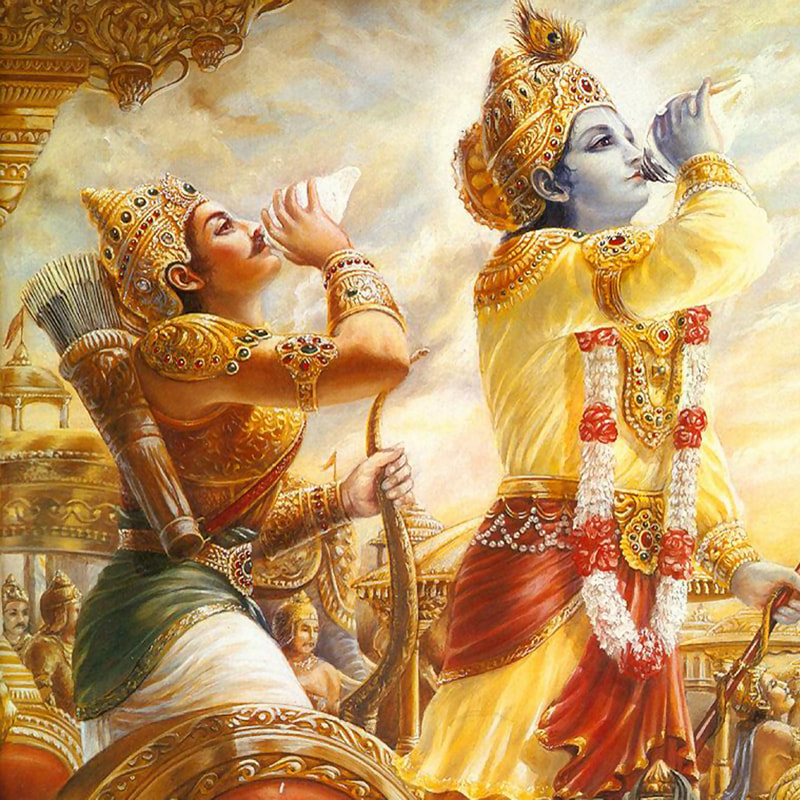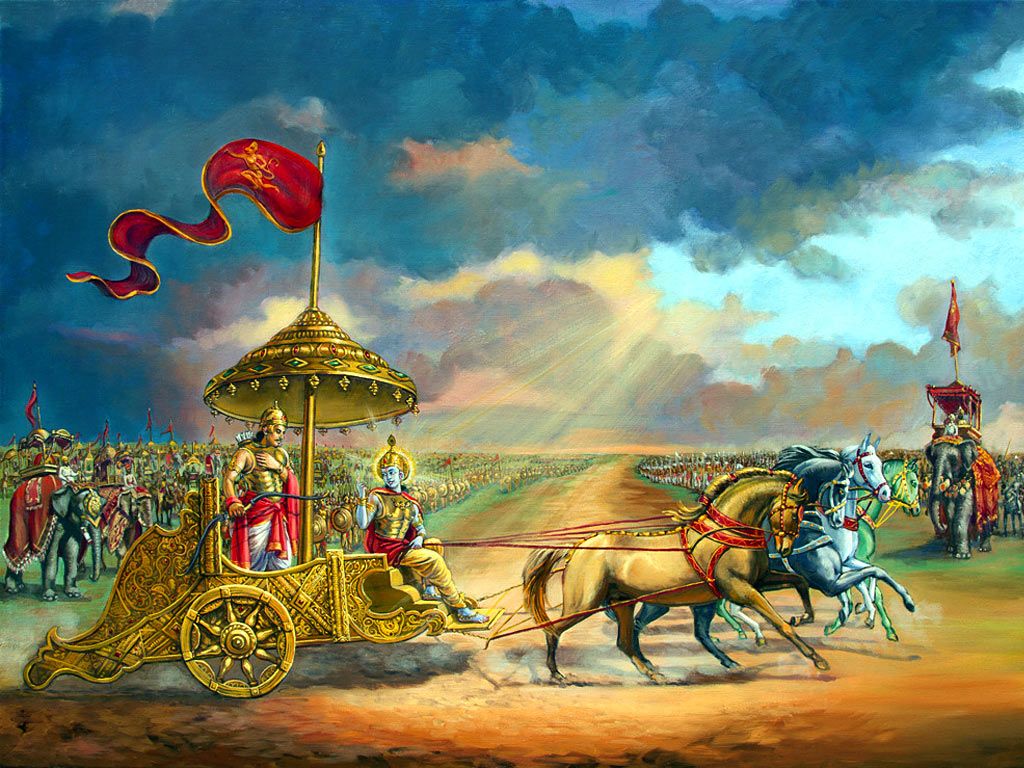|
The Bhagavad Gita – the Karma Yogi
॥ श्रीमद्भगवद्गीता ॥ ॥ ॐ श्री परमात्मने नमः ॥ ॥ अथ श्रीमद्भगवद्गीता ॥ The enlightened Karma yogi has no sense of agency, evenness of mind in favourable or unfavourable conditions and offer fruits of actions to almighty. Such yogi is free from bondages. Initially, he shall have the feeling of agency, so he should offer all the fruits of action to the Brahman. Later, the sense of agency is destroyed. Dedicated and detached actions are brought by Bhakti element. Real sanyasi and real karma yogi are not so different. Both should abandon all passions and attachments, hope and expectations. The only difference is that one who is early stages of the discipline, struggling to gain the non-attached conditions. The detailed explanations, chapter wise and verse-wise are as under (the relevant Sanskrit verses of Bhagavad Gita are mentioned at the bottom): Evenness of mind:
Absence of sense of agency:
Karma as duty:
Self-Surrender:
0 Comments
The Shrimad Bhagavad Gita – Varnas or Caste-System
॥ श्रीमद्भगवद्गीता ॥ ॥ ॐ श्री परमात्मने नमः ॥ ॥ अथ श्रीमद्भगवद्गीता ॥ There is great deal of misconception about the varna-system (caste system) in Hinduism. It is important to recognize, Varna is not genealogical or by birth or hereditary but by profession. The four Varnas are not lineages, but categories. The Shrimad Bhagavad Gita describes the professions, duties and qualities of members of different varnas. Shree Krishna has clearly explained in chapters 14 and 18 of Shrimad Bhagavad Gita about distribution of duties and Varna-system (caste system). In Shrimad Bhagavad Gita (chapter 15, verse 1 & 2 of Purushottam Yoga), Shree Krishna advised that the Supreme Being, indestructible, permanent and eternal is root and main trunk is Brahma and universe is its branches. All human beings are created formerly by Brahma. Hence, there is no distinction of Varnas. This whole universe is Brahman. The Shrimad Bhagavad Gita thereafter recites a behavioural model for Varna based on attributes (gunas) of the persons. These attributes arise from Prakriti (Nature). Prakriti is the conceiving Mother, of which, three gunas viz. Sattva, Rajas and Tamas are arise and tie down the imperishable soul to the body (chapter 14, verse 5). There is no entity on earth, or again in heaven among the Devas, that is devoid of these three Gunas, born of Prakriti. The pre-dominance of the particular gunas say sattvika are to be of category Brahmanas irrespective of birth. The work or duties should be adopted according to in-born Gunas of the persons and the categories of work are described as Brahmanas, Kshatriyas, Vaishyas and Sudras. With the evolution of societies in human beings, the work distribution also developed for the better synergy and ease of life. All societies, organisations and countries are marked by work distribution based on the capabilities and aptitudes. The duties of the Person according to the nature are defined (chapter wise and verse-wise of Shrimad Bhagavad Gita) as under (the relevant Sanskrit verses of Bhagavad Gita are mentioned at the bottom):
|


 RSS Feed
RSS Feed